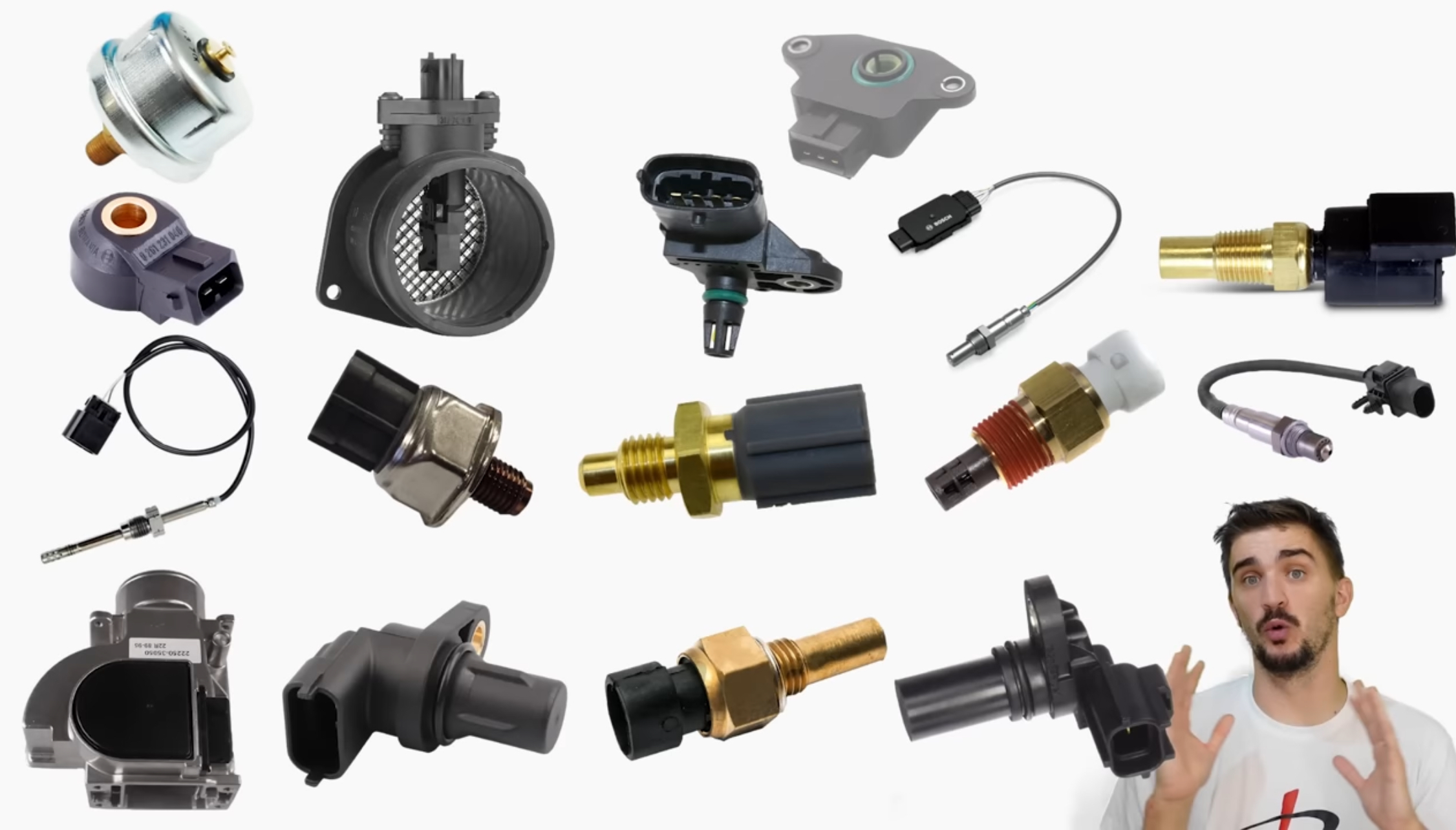Modern car engines are packed with sensors that work together to ensure smooth and efficient performance. From measuring air intake to detecting harmful emissions, these sensors provide crucial data to the engine control unit (ECU), allowing it to make split-second adjustments. But what exactly do these sensors do? Where are they located? And what happens if they fail? Let’s break it all down.
Understanding Engine Sensors
Every sensor in a car serves a specific purpose. To make things easier, we’ve grouped them into five categories:
- Position Sensors – Track the position of key components.
- Air Flow Sensors – Measure how much air is entering the engine.
- Pressure Sensors – Monitor fluid and air pressure.
- Temperature Sensors – Keep tabs on vital system temperatures.
- Air-Fuel Ratio and Emissions Sensors – Ensure optimal combustion and emissions control.
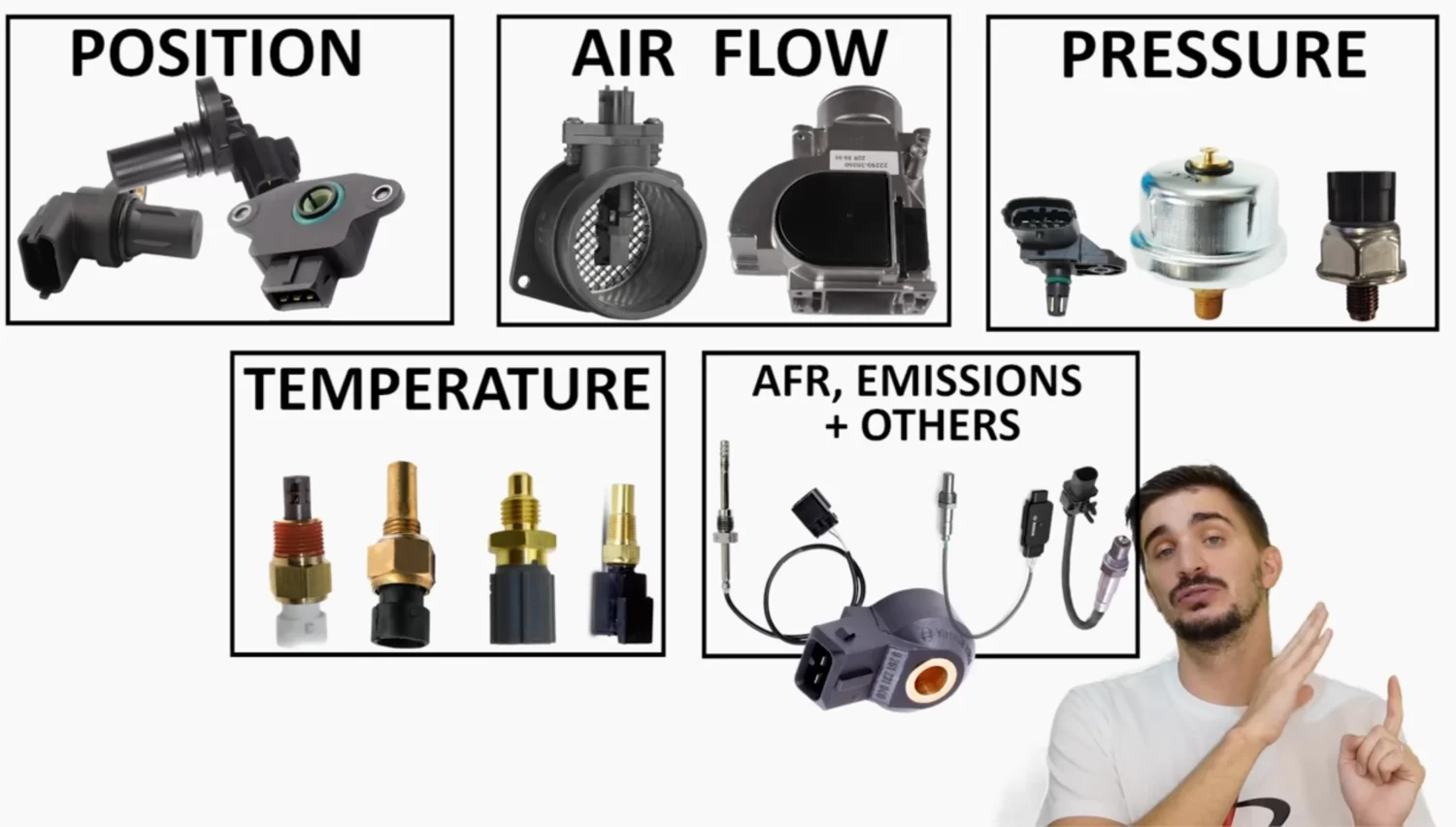
Position Sensors
Crankshaft Position Sensor
The crankshaft position sensor informs the ECU of the crankshaft’s position, which helps determine the piston’s location inside the cylinder. It’s typically found near the crankshaft pulley, timing gear, or flywheel. A faulty crankshaft sensor can cause the engine to stall or fail to start.
Camshaft Position Sensor
Similar to the crankshaft sensor, the camshaft position sensor helps the ECU determine the precise timing for fuel injection and ignition events. Located on or near the camshaft, a failing cam sensor can lead to rough running or even no-start conditions.
Throttle Position Sensor (TPS)
Mounted on the throttle body, the TPS measures the position of the throttle plate, allowing the ECU to adjust fuel delivery. A malfunctioning TPS can result in unpredictable acceleration and erratic idling.
Air Flow Sensors
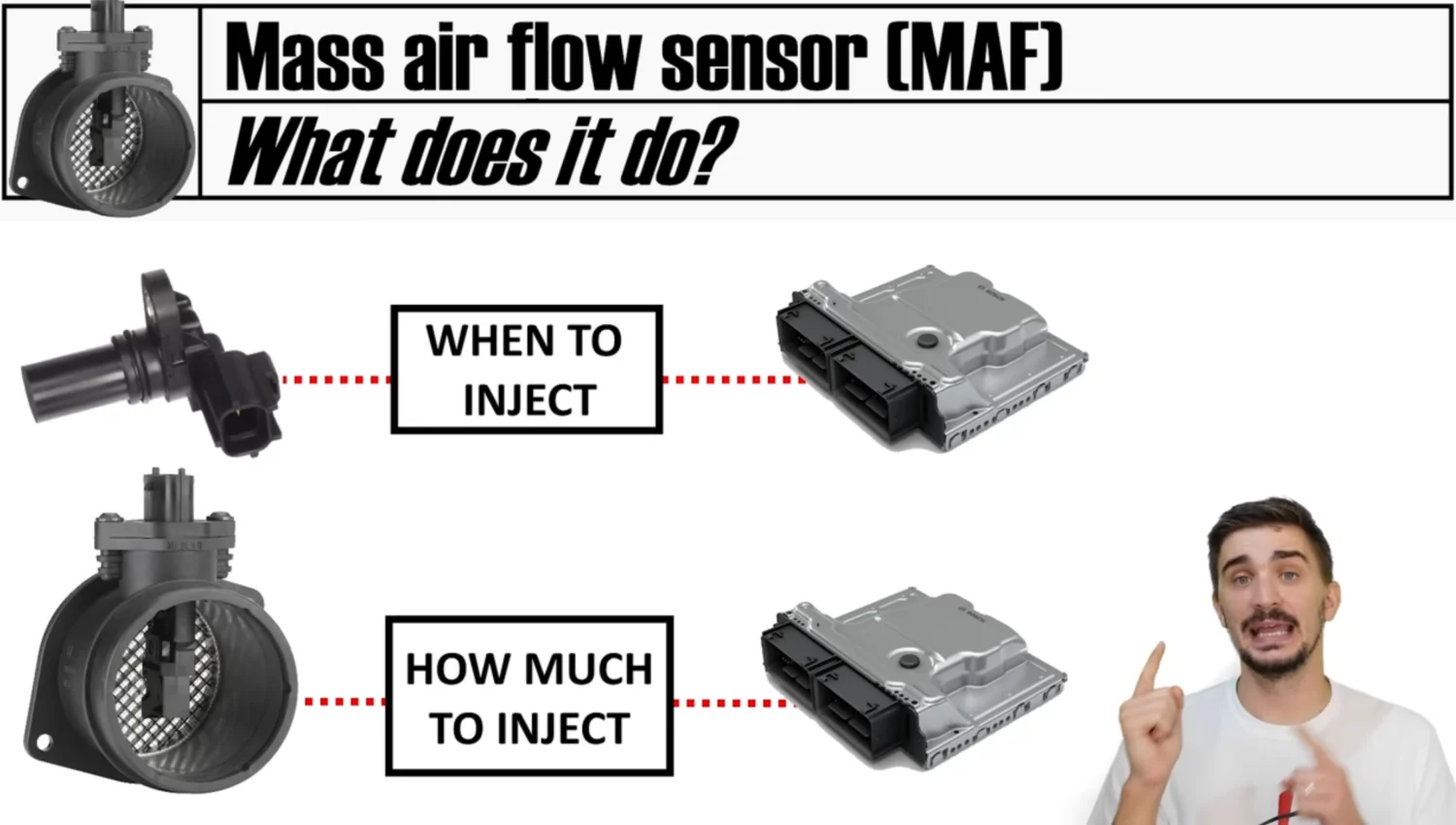
Mass Air Flow (MAF) Sensor
The MAF sensor measures the amount of air entering the engine, helping the ECU determine how much fuel to inject. Located after the air filter, a dirty or failing MAF sensor can lead to poor fuel economy and rough running.
Vane Air Flow Meter (AFM)
Common in older vehicles, the AFM uses a mechanical flap to measure airflow. Like the MAF sensor, it’s positioned near the air filter and can cause similar issues if faulty.
Pressure Sensors
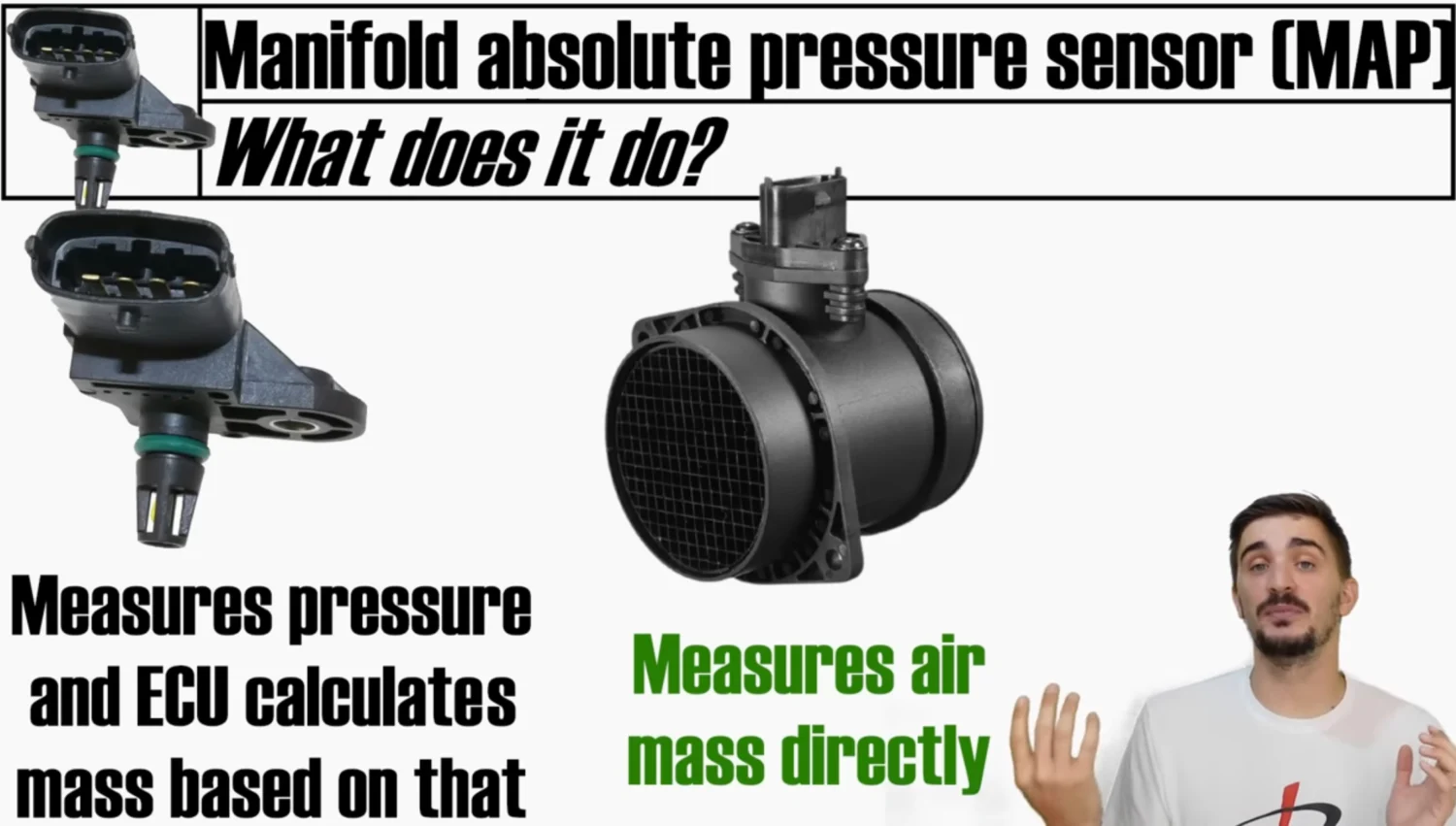
Manifold Absolute Pressure (MAP) Sensor
Instead of measuring air volume like a MAF sensor, the MAP sensor calculates air density based on intake manifold pressure. It’s crucial for turbocharged engines and is usually found on the intake manifold.
Oil Pressure Sensor
This sensor ensures the engine has adequate lubrication by monitoring oil pressure. If it detects low pressure, it can trigger warning lights or limp mode to prevent engine damage.
Fuel Pressure Sensor
By measuring the pressure in the fuel rail, this sensor helps the ECU determine the correct fuel injection duration. Symptoms of failure include starting issues and poor acceleration.
Temperature Sensors
Intake Air Temperature (IAT) Sensor
Working alongside airflow sensors, the IAT sensor measures incoming air temperature. Typically integrated with the MAF sensor, it helps optimize combustion and fuel efficiency.
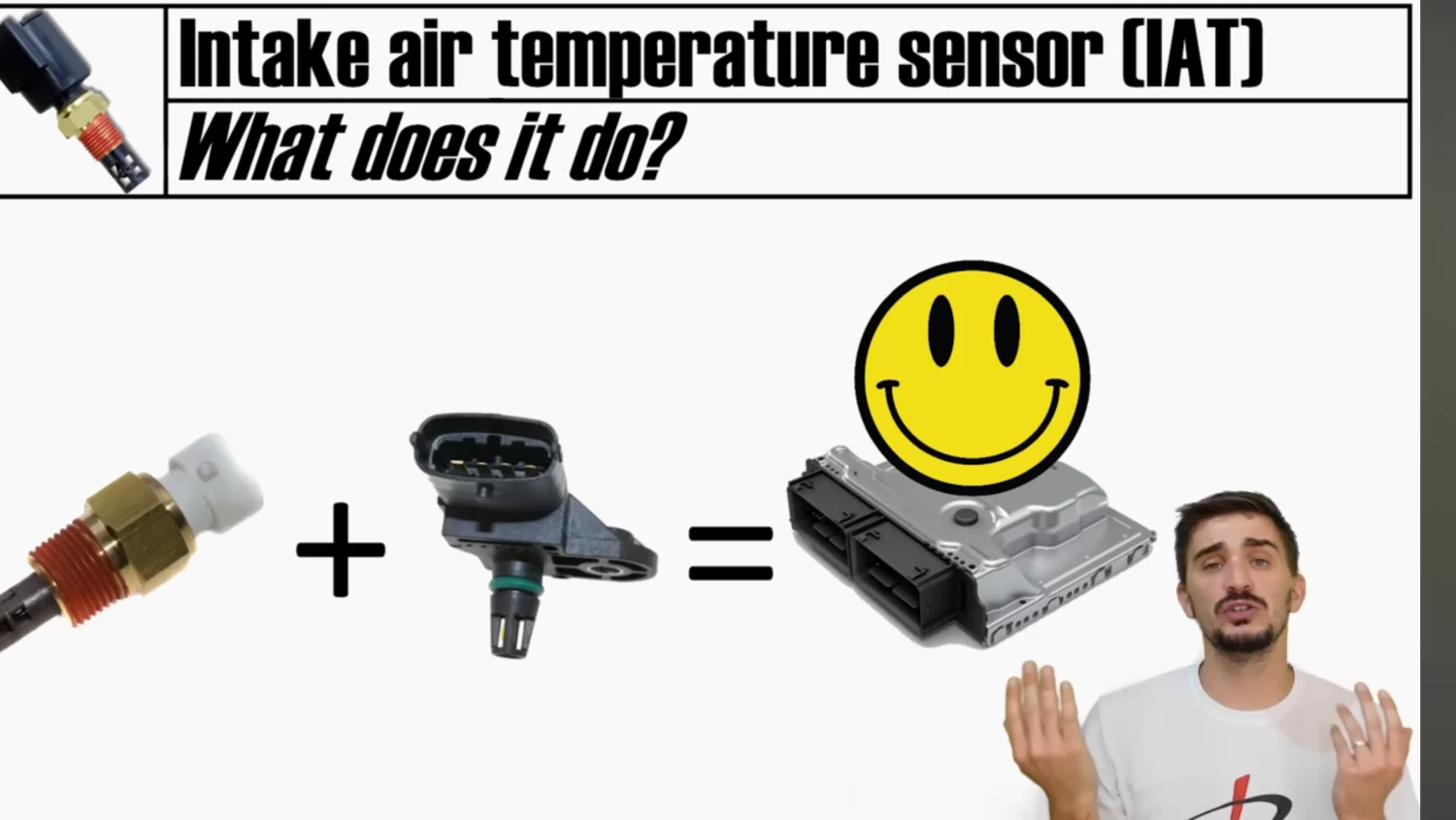
Coolant Temperature Sensor
This sensor monitors the engine’s temperature to adjust fuel injection and trigger cooling fans when needed. It’s commonly located near the thermostat housing.
Fuel Temperature Sensor
Usually found in the fuel tank or fuel lines, this sensor ensures fuel density adjustments are made for optimal combustion.
Oil Temperature Sensor
Measuring engine oil temperature, this sensor is critical for preventing overheating and ensuring proper lubrication. It’s often installed on the engine block or oil pan.
Air-Fuel Ratio and Emissions Sensors
Oxygen (O2) Sensor
Measuring oxygen levels in the exhaust, the O2 sensor helps the ECU adjust the air-fuel ratio for efficiency and emissions compliance. Positioned before and after the catalytic converter, a failing O2 sensor can trigger warning lights and poor fuel economy.
Exhaust Gas Temperature (EGT) Sensor
Often found in turbocharged engines, the EGT sensor monitors exhaust temperatures to protect the turbocharger and catalytic converter from excessive heat.
Nitrogen Oxide (NOx) Sensor
Primarily used in diesel engines, this sensor ensures the selective catalytic reduction (SCR) system is effectively reducing harmful nitrogen oxide emissions.
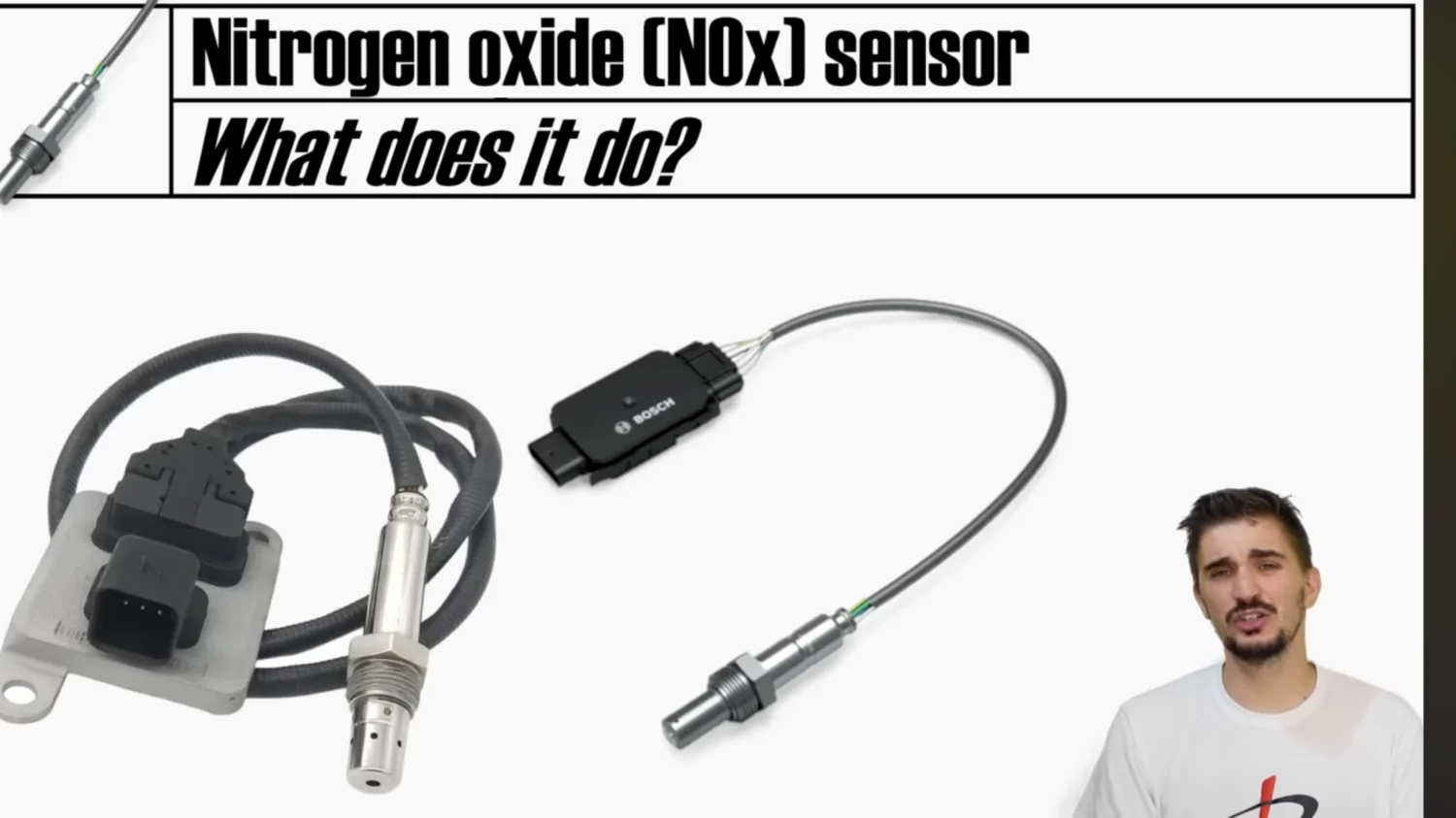
Knock Sensor
Listening for abnormal combustion (knocking), the knock sensor allows the ECU to adjust ignition timing to prevent engine damage. Located on the engine block, a failing knock sensor can lead to loss of power and increased emissions.
The Big Picture
When all these sensors work together, they provide the ECU with a complete picture of engine operation. They ensure optimal fuel efficiency, emissions compliance, and overall performance. If one sensor goes bad, it can create a ripple effect, leading to poor drivability and potential damage.
What Happens If a Sensor Fails?
Each sensor has a unique role, but common failure symptoms include:
- Poor fuel economy
- Rough idling or stalling
- Difficulty starting
- Check engine light illumination
Modern vehicles rely on these sensors to function correctly, making timely diagnosis and repair essential.
Stay Informed with D4A
Want to learn more about car sensors and how to keep your vehicle running at peak performance? Subscribe to D4A on YouTube for in-depth explanations and hands-on tutorials.
- YouTube: Driving 4 Answers
- Spanish Sub-Channel: D4A Español
- Merch & Support: D4A Shop
- Instagram: @driving4answers
With the right knowledge, you can take better care of your car and ensure it runs smoothly for years to come.
